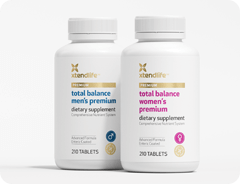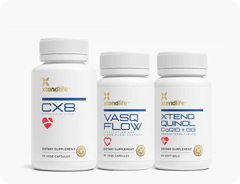“Just one gram of spirulina a day is sufficient to bring a child who is severely malnourished to health, and this can all be accomplished within a few weeks. The truly beautiful thing about this wonder-alga is the fact that its growth and cultivation is both affordable and efficient,” wrote Ashley L. Zeik, a youth delegate for Intergovernmental Institution for the Use of Micro-Algae Spirulina Against Malnutrition, on a website devoted to hunger and under-nutrition. (Ref. 1)
Rich in protein, minerals, vitamins, and antioxidants that can protect against free radicals and slow the pace of aging, spirulina could be a great option for not only feeding underdeveloped countries but also providing nutritional boosts in developed countries where populations rely on drive-through dinners for much of their food.

A Kickstarter campaign calls it “the food of the future” – much like the recently-hyped Soylent, a liquid shake that gets its name from the futuristic Charlton Heston thriller “Soylent Green,” which featured a hip new food source manufactured from, ahem, people. (Ref. 2)
Soylent - and Heston’s “Soylent Green” - aside, the Kickstarter campaign – which provides at-home growing kits similar to aquariums for donors - calls spirulina “the most nutritious food on the planet … filled with more nutrients than any other food in the world.”
So why don’t more of us know about it?
A History of Spirulina
The Aztecs used spirulina as a food source and gathered it from Lake Texcoco, a long-since dry water basin that is now home to Mexico City. (Ref. 3)
It was also popular as a food source in Chad, where it is still manufactured into cakes and sold at street markets.
In the late 1980s, both NASA and the European Space Agency pushed for spirulina as a food to be cultivated on long-term space missions, providing astronauts with something other than standard space food, a mission that was ultimately found to be a success.
Because spirulina captured so much attention after fueling astronauts in space, scientists began taking a closer look at it for its health benefits.
A Wealth of Good Health
A 2008 study from researchers based at Liverpool University Hospital in the United Kingdom and Hippocrateio Hospital and the University of Ioannina, both in Greece, found evidence that spirulina could help treat allergies and lower cholesterol levels and determined that the antioxidant beta-carotene in spirulina may offer some cancer-fighting effects. (Ref. 4)
It is made up of about 60 percent protein, and is a complete protein, containing all the essential amino acids, making it perfect for vegetarians who might miss some essential nutrients in their meat-free diets.
It also contains B complex vitamins, beta-carotene, vitamin E, manganese, zinc, copper, iron, selenium, and gamma-linolenic acid, an omega-6 fatty acid that plays a role in the growth and brain function and can also help suppress inflammation.
Other benefits:
- The carotenoids in spirulina may provide protection from the sun. (Ref. 5)
- It’s high in chlorophyll, which helps remove toxins from the blood. (Ref. 6)
- Animal studies have shown that it could provide a boost to the immune system, warding off infection and some diseases. (Ref. 7) In addition, spirulina helps support the immune system’s healthy inflammation management processes. (Ref. 8)
- Some studies have shown that it can help keep blood glucose levels regulated, potentially providing benefits to people with type 2 diabetes. (Ref. 7)
- Spirulina is a good source of Gamma-linoleic acid (GLA) – which further helps maintain and support a healthy immune system. (Ref. 8)
These benefits make spirulina a great addition to your health regime. In fact, we include 1,700 mgs of organic spirulina in our Zupafood™ ELITE and 3,200 mgs in our Zupafood™ GREENZ products. You can read more about the benefits in our Zupafood™ overview page.
References:
- http://www.hunger-undernutrition.org/blog/2011/03/micro-algae-spirulina-the-solution-to-malnutrition.html
- https://www.kickstarter.com/projects/spirulinasystems/food-of-the-future-home-grown-spirulina-superfood
- http://www.spirulina-benefits-health.com/spirulina_algae_history.html
- http://www.hindawi.com/journals/ecam/2011/531053/
- http://umm.edu/health/medical/altmed/supplement/spirulina
- http://www.xtend-life.com/Blog/11-07-26/Eat_Sunscreen_for_Glowing_Skin_Health.aspx
- http://wellnessmama.com/4738/herb-profile-spirulina/
- http://www.xtend-life.com/zupafood/greenz


 Supplements
Supplements Superfoods
Superfoods Bundles
Bundles












